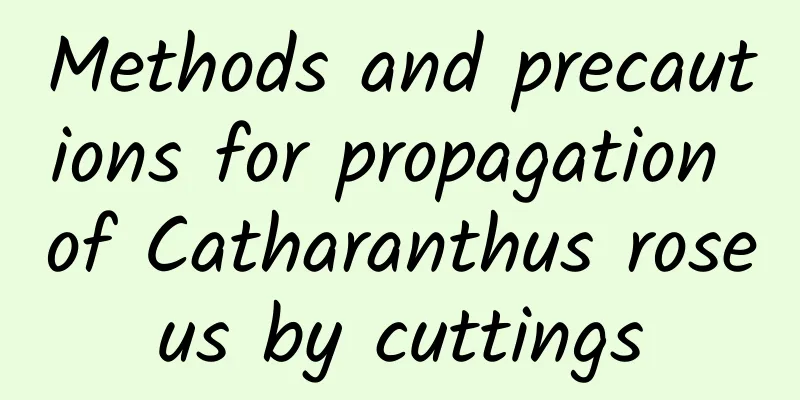How to grow poinsettia, pictures of poinsettia

1. Breeding methods1. Light: Poinsettia needs sufficient light to grow. It has a strong phototropism and needs sunlight all year round. If there is insufficient light, the plant will easily grow too tall and it will also affect flowering. As a short-day plant, the flowering period can be advanced or delayed by controlling the light exposure time. If you ensure 8 hours of light per day, it will bloom in 40 days. 2. Temperature: Poinsettia prefers warm climate and has poor cold resistance. Be sure to keep warm in winter and keep the room temperature between 15-20℃. If the temperature is lower than 15℃, it will affect the color change of bracts and is not conducive to the differentiation of flower buds. You can cover the upper part of the plant with a plastic bag to keep it warm, but remove it regularly for ventilation. 3. Soil: Poinsettia grows best in loose and fertile soil. Good drainage can prevent the roots from being flooded and reduce the possibility of root rot. If you need to prepare potting soil, you can mix garden soil, humus, leaf mold and cake fertilizer in a ratio of 3:3:3:1 to form a matrix, and also add a small amount of slag. 4. Watering: Poinsettia is not very drought-resistant and is also afraid of waterlogging, so watering should be carried out according to the climate and growth conditions. During the growing season, the soil should be kept moist, but not waterlogged. Watering should be reduced during the flowering period, as too much water will cause the flowers to fall off. Watering should be even, otherwise it will cause the leaves to turn yellow and fall off, and the branches will grow unevenly. 5. Fertilization: Poinsettia needs to be applied with base fertilizer when potting. Generally, organic fertilizer or horseshoe slices are used. During the growing season, liquid fertilizer should be tried every 10-15 days. The decomposed sesame paste residue can be diluted 5 times before use. In autumn, you need to add compound fertilizer once a week for a month to promote the differentiation of flower buds. 6. Pruning: Three weeks after the poinsettia is planted, it is time to pinch off the top to promote the growth of side branches. During the dormant period, you should prune diseased and weak branches. If you change the pot, you can also trim the roots appropriately. In autumn, the plant needs to be shaped and pruned to make it smaller and improve its ornamental value. 2. Pictures |
<<: Cultivation methods and precautions of Medal Chrysanthemum
>>: Cultivation methods and precautions of Hibiscus truncatum
Recommend
What are the breeding methods and precautions of red goose palm
Introduction of Red Goose Palm Red Anthurium belo...
How to grow water-absorbing green radish to make it more vigorous
Water-absorbing green radish refers to a potted g...
How to grow potted chrysanthemums
soil The best soil for chrysanthemums is slightly...
Advantages and disadvantages of fine wave rose
The wavy rose is a shrub rose. Mature plants can ...
How to grow Phoenix succulent in summer
1. Sunshade Because the light is very strong in t...
How to prune wintersweet trees
When to prune wintersweet trees Wintersweet trees...
Cultivation methods and precautions of dwarf morning glory
Dwarf petunias are highly adaptable but are sensi...
Can I plant a peach tree in front of my house?
Can I plant a peach tree in front of my house? Pe...
When does Lythrum salicina bloom?
Lythrum salicina flowering period The flowers of ...
How to fix the yellowing of lucky bamboo leaves
1. Soil culture remediation method 1. Drainage: I...
Is it good to soak wood ash in water and water flowers? What effect does wood ash have on flowers and plants?
Is it good to soak wood ash in water and water th...
There are several kinds of flowers suitable for planting in winter. If not now, when?
1. Hyacinth Hyacinth is a very beautiful flower. ...
How to plant Epiphyllum seeds
Soil selection Different planting soils are suita...
What are the benefits of soaking apple peels in water to water flowers? What flowers are suitable for watering with apple water?
1 Benefits of soaking apple peels in water to wat...
What to do if the leaves of the emerald green grass turn yellow
1. Watering too frequently Many flower lovers oft...









